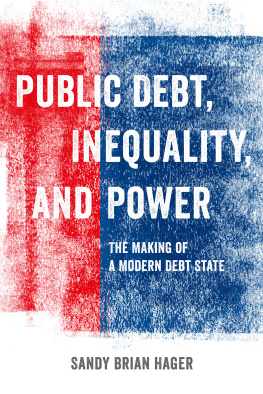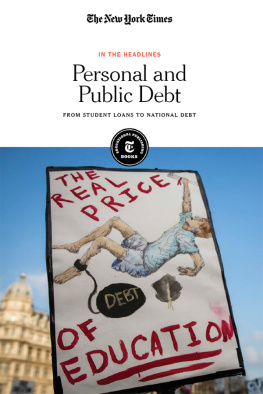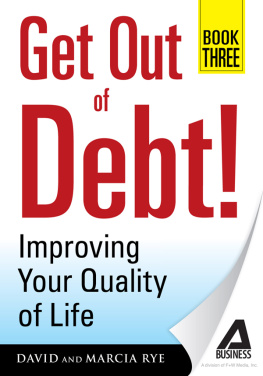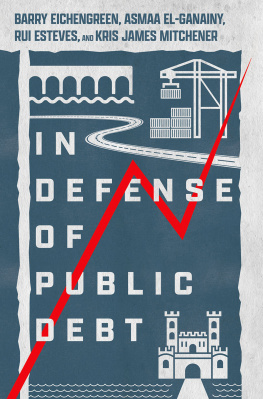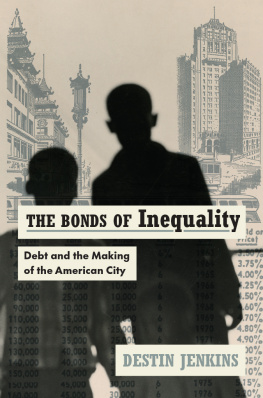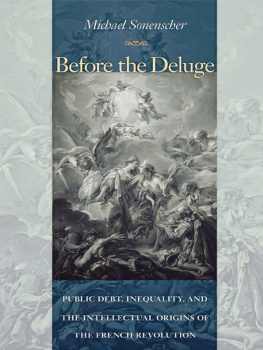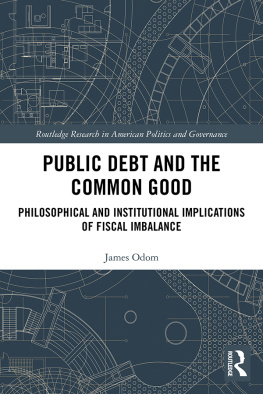CONTENTS
Luminos is the open access monograph publishing program from UC Press. Luminos provides a framework for preserving and reinvigorating monograph publishing for the future and increases the reach and visibility of important scholarly work. Titles published in the UC Press Luminos model are published with the same high standards for selection, peer review, production, and marketing as those in our traditional program. www.luminosoa.org
Public Debt, Inequality, and Power
The publisher gratefully acknowledges the generous support of the Anne G. Lipow Endowment Fund for Social Justice and Human Rights of the University of California Press Foundation, which was established by Stephen M. Silberstein.
Public Debt, Inequality, and Power

THE MAKING OF A MODERN DEBT STATE
Sandy Brian Hager

UNIVERSITY OF CALIFORNIA PRESS
University of California Press, one of the most distinguished university presses in the United States, enriches lives around the world by advancing scholarship in the humanities, social sciences, and natural sciences. Its activities are supported by the UC Press Foundation and by philanthropic contributions from individuals and institutions. For more information, visit www.ucpress.edu .
University of California Press
Oakland, California
2016 by The Regents of the University of California
This work is licensed under a Creative Commons CC-BY-NC-ND license. To view a copy of the license, visit http://creativecommons.org/licenses .
Library of Congress Cataloging-in-Publication Data
Names: Hager, Sandy Brian, author.
Title: Public debt, inequality, and power : the making of a modern debt state / Sandy Brian Hager.
Description: Oakland, California : University of California Press, [2016] | Includes bibliographical references and index.
Identifiers: LCCN 2016008399 | ISBN 9780520284661 (pbk. : alk. paper) | ISBN 9780520960428 (ebook)
Subjects: LCSH: Debts, PublicUnited States. | Government securitiesUnited States.
Classification: LCC HJ8101 .H34 2016 | DDC 336.3/40973dc23
LC record available at http://lccn.loc.gov/2016008399
Manufactured in the United States of America
25 24 23 22 21 20 19 18 17 16
10 9 8 7 6 5 4 3 2 1
CONTENTS
ILLUSTRATIONS
FIGURES
TABLES
PREFACE
This book began life as my PhD dissertation, which I successfully defended in September 2013. I had started the doctoral program in political science at York University in Toronto six years earlier, just before the world was plunged into the worst financial crisis since the Great Depression of the 1930s. Looking back on my journey through the PhD program, it is difficult to envision a more remarkable set of circumstances in which to study political economy. Historians of thought have a knack for demonstrating how the ideas of a given age were shaped by their historical context. My case is really no different: the research path that I chose to pursue during my time at York was undoubtedly influenced by the spectacular upheaval in the global political economy that I saw unfolding.
One thing that the global financial crisis made plain was the indispensable role of public debt within contemporary capitalism. As governments across the advanced capitalist world sought to combat the crisis, a process of private deleveraging was met by large-scale public borrowing, the likes of which had not been seen since World War II. The global financial system was, in large part, saved from the brink of collapse by the explosive rise in public indebtedness. I became especially fascinated with the US case, not only because of the countrys position at the center of global capitalism, but also because the massive growth in its public debt seemed to defy its reputation as a liberal bastion of small government and free markets.
And so I started to read into the history of the public debt to understand its origins and how it had evolved over time. I quickly discovered that the developments during the crisis were not as novel as I had originally thought. As the historical record shows, the public debt has been central to capitalist states from the very beginning, even if its function within them has changed considerably. The public debt initially served to bolster the war-making prowess of states in the eighteenth and early nineteenth centuries. In the latter half of the nineteenth century, governments borrowed to develop massive public works projects, including railways and canals. It was only in the twentieth century that the public debt was discovered as a key tool of macroeconomic policy and crisis management.
What most piqued my interest in this historical reading were the colorful debates concerning ownership of public debt, the power of government bondholders, and the redistributive effects of government borrowing on class relations in Western Europe and the United States during the eighteenth and nineteenth centuries. On one side of this debate, tales were told of the capitalists who effectively controlled governments thanks to their power as dominant owners of the public debt. Dissenting accounts, which have become more and more prevalent from the late nineteenth century onward, claimed that the public debt was, in fact, a democratizing force because it was mainly those of modest means, including widows and orphans, who owned it.
These unresolved historical debates resonated with me because of another development that the crisis had laid bare: the growing wealth and income inequality and the percolating class warfare in the liberal market heartland of the United States, Canada, and the United Kingdom. It was during the early years of my PhD program that the research of Thomas Piketty, Emmanuel Saez, and others on the stunning increases in inequality within these countries was just starting to be noticed. Later on, in 2011, awareness of issues of inequality and corporate power was increased thanks to the occupy movement, which began in Zuccotti Park near Wall Street and which quickly spread to become a global protest movement against crisis-era capitalism.
This, in essence, was the historical milieu in which I operated, and my intuitive response was to put two and two together. On the one hand, there was the public debt, which had long played a central role in capitalist societies, a role that had been further solidified during the crisis. On the other hand, there were the growing inequities in the distribution of wealth and income that had intensified as a result of the crisis.
As far as I could tell, the academic literature on the contemporary US political economy had not yet managed to link issues of public debt and inequality, at least not in any systematic way. In other words, rich accounts of the class conflict at the heart of the public debt, such as those found in the historical literature, were simply absent from more contemporary research.
What I did find was that most of the contemporary research suffers from an aggregate fixation with the macroeconomic consequences of government borrowing. Disaggregate studies of the public debt focus on generations, not classes, as their primary units of analysis. And the abstract, even esoteric, assumptions that inform the generational debates to me seemed, to put it mildly, otherworldly. I found the sparse contemporary accounts that do draw attention to the class underpinnings of the public debt unsatisfying, mainly because they offer little in the way of empirical evidence to substantiate their claims.
So it was out of these twin interests in the public debt and in inequality that my PhD research project emerged. I started the research process with a simple question that contemporary accounts had failed to address: namely, who exactly are the major domestic owners of the US public debt? A long and painful process of empirical inquiry yielded quite shocking results. My research findings showed that, since the 1980s, domestic ownership of the public debt had rapidly become concentrated in favor of the now-infamous top 1 percent of US households and the top 2,500 US corporations. What stunned me most was the finding that ownership of the public debt had become even more heavily concentrated during the crisis.

